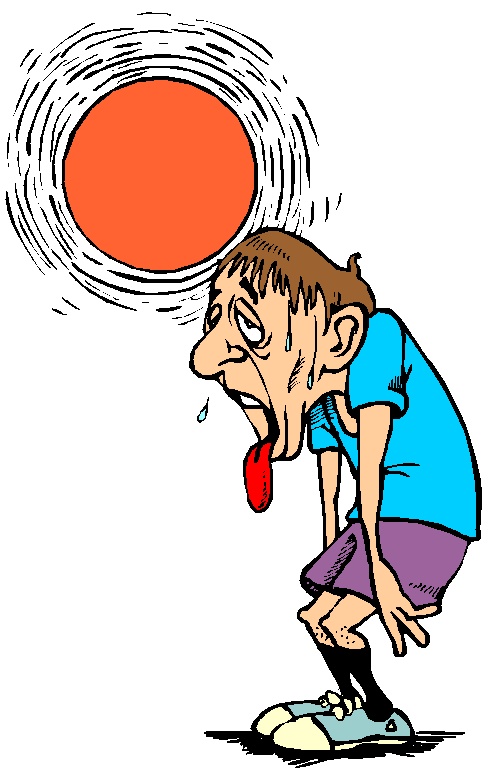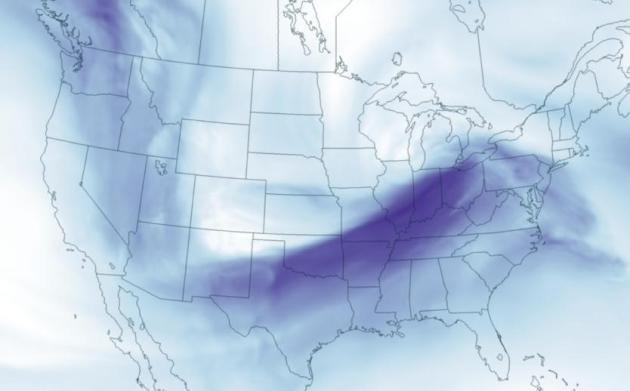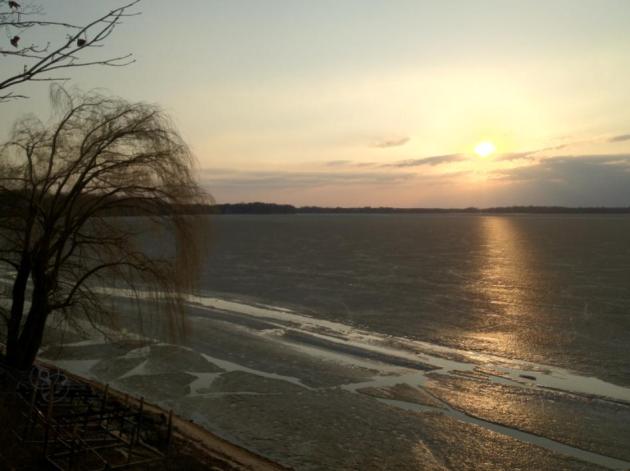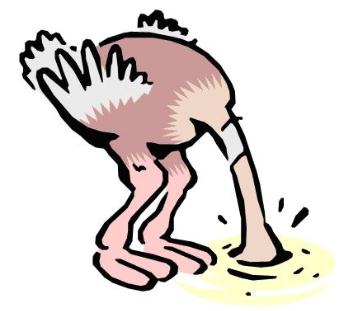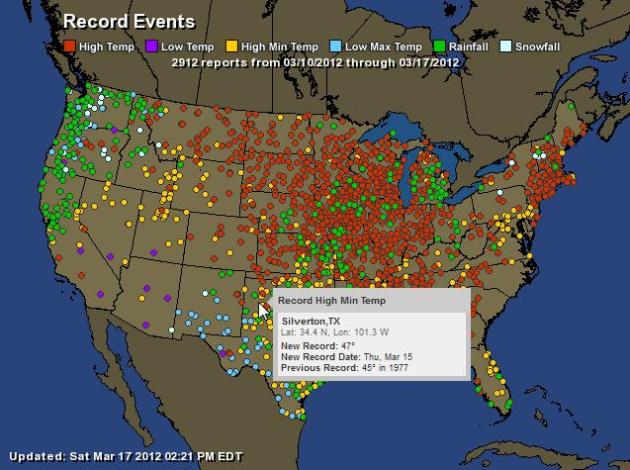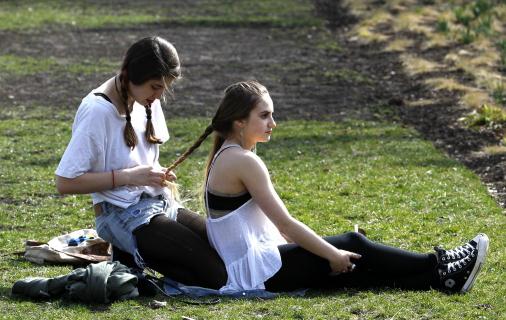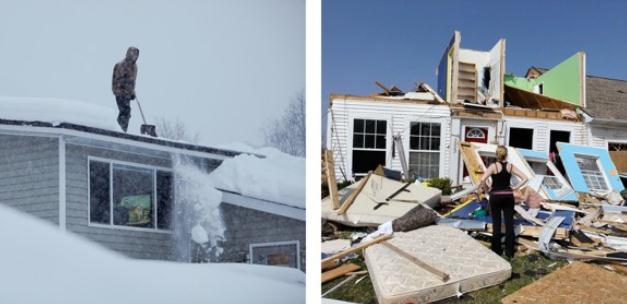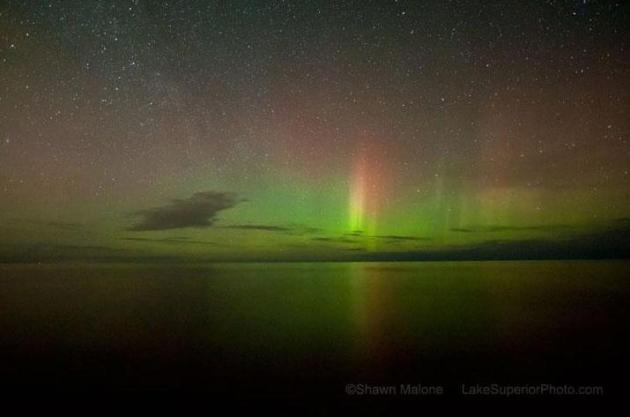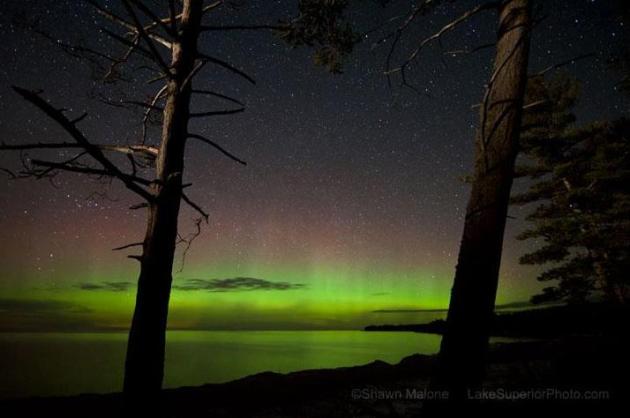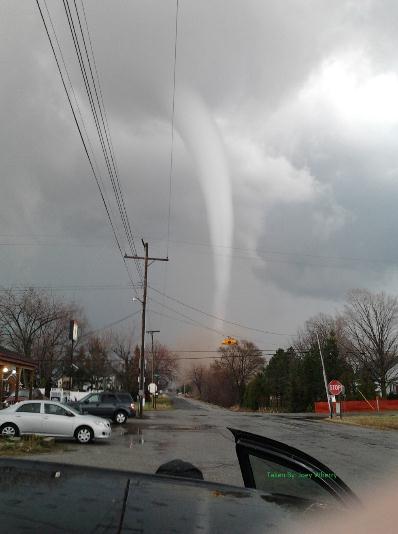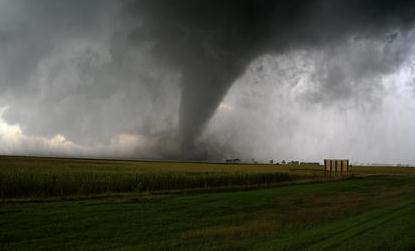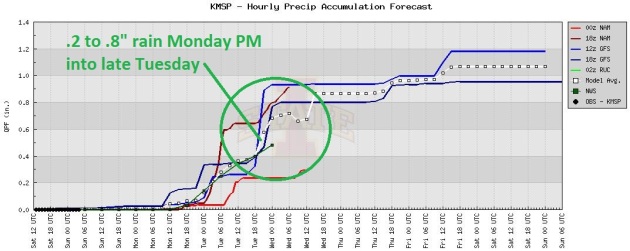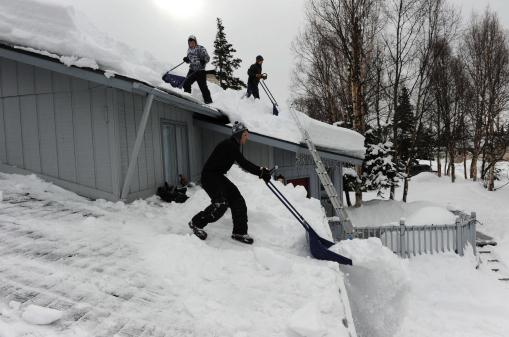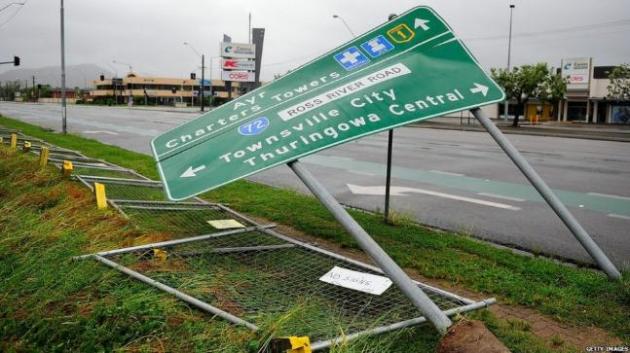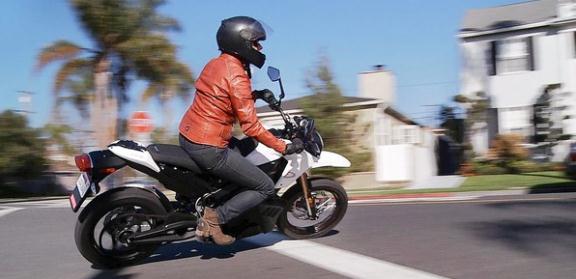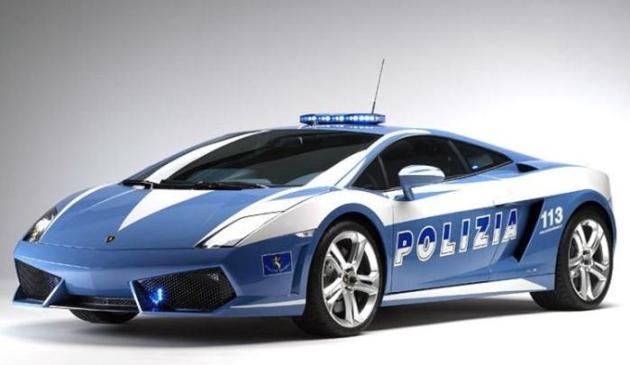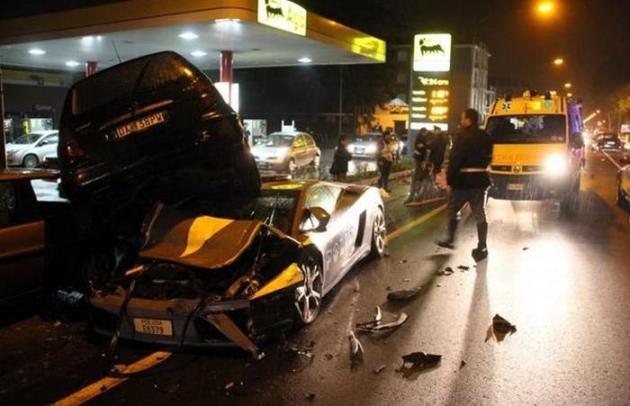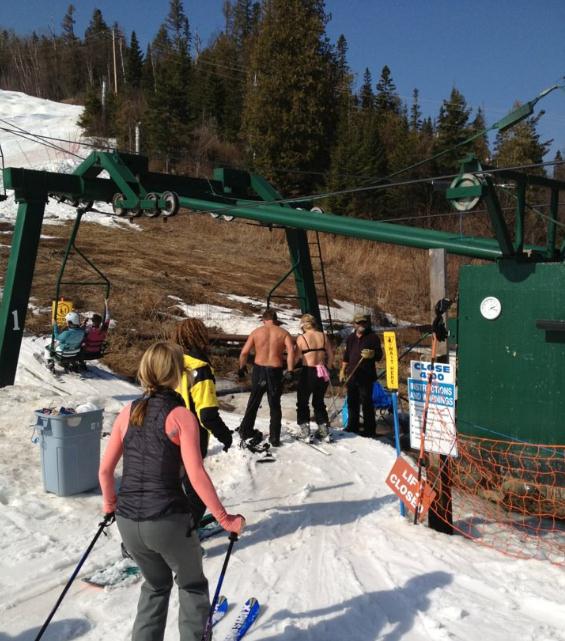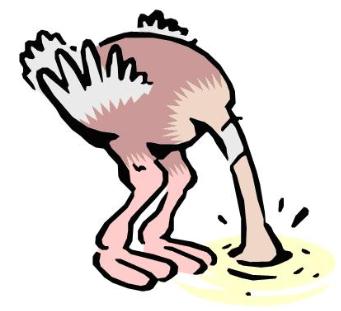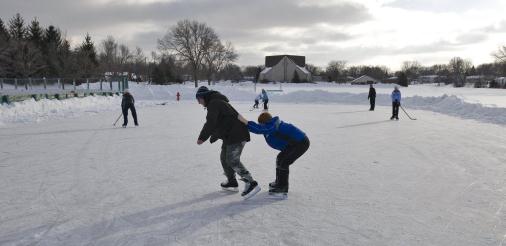* 80 F. record high in the Twin Cities Saturday. Earliest 80 on record for KMSP.
77 F. high at International Falls Saturday. Talk about record-smashing. INL broke their old record by 22 degrees, records go back to 1897. 77 is their average mid-summer high. Thanks to my old pal, Mike Seidel, for passing that great nugget along.
Record-Tying March Dew Point. My memory is fading (too many senior moments) but I think Dr. Mark Seeley said that the highest dew point in March history at KMSP was 60, set back in 1945. We tied that value around midday Saturday, and will probably surpass 60 later today, again Monday - setting the stage for a few rough, potentially severe T-storms, late afternoon and evening tomorrow. Check out the hourly conditions at Twin Cities International Airport going back 72 hours
here, courtesy of the National Weather Service.
"Science has never drummed up quite as effective a tranquilizing agent as a sunny spring day." - W. Earl Hall
 Sunday Records:
82 F
Sunday Records:
82 F. Eau Claire, WI.
80 F. Twin Cities
75 F. Duluth
My Kind Of Cold Front. After brushing 80 again today and Monday (obviously record-setting) Minnesota cools down into the 50s by midweek. A surge of Canadian air may drop the mercury into the 30s Saturday morning. The Twin Cities will probably avoid a frost, but I could see 32-degree readings over parts of central and northern Minnesota early Saturday. Don't even think of planting annuals just yet - in spite of this historic warmth. Graphic courtesy of the University of Iowa Meteogram Generator.
"Mother Nature Is Rearranging Her Trophy Case." I can't take credit for that memorable bit of weather-prose. That's from the
Minnesota Climatology Working Group, which has details on an amazing week's worth of records for major cities across Minnesota. Minneapolis/St. Paul has experienced 5 record highs and 3 record (warm) nighttime lows since March 10.
19:1. Ratio of warm weather records to cold weather records so far in March, nationwide. Source:
capitalclimate.com.
14:1. NOAA data shows 14 times more warm weather records than cold records since January 1 across the USA.
2:1. Ratio of record highs to lows, nationwide, in the last decade - nationwide. Source: NOAA,
NCAR.
Top 10 Most Vulnerable States To Flooding In The USA? A few surprises on the list (thankfully Minnesota and Wisconsin are not on the list). Details below.
$2.2 trillion dollars of the U.S. economy is thought to be affected annually by weather. Transportation, agriculture, insurance, leisure; it's a long list.
Ripe For Tornadoes? The combination of a sudden surge of warmth and moisture coupled with an extra-energized jet stream aloft may be setting the stage for a very severe tornado season in 2012. Details below. Upper level wind speed map courtesy of SPC.
Monday Severe Risk In Minnesota And Iowa? The very latest convective outlooks from NOAA's SPC division are
here.
Preview Of Coming Attractions? This was the severe cell that raced from south to north across Wisconsin Friday evening, brushing Eau Claire, producing some quarter size hail. Thanks to Dirk S. Miller for sharing a terrific photo: "
The severe thunderstorm in North Central Chippewa/Southern part of Rusk County last evening…This lightning shot was taken from 6 miles North of Rice Lake looking Southeast…"
Very Early Ice Out? The average ice-out date for Lake Minnetonka is April 13, April 2 for White Bear Lake, April 24 up at Lake Mille Lacs. Yesterday I saw a thin strip of open water on the Main Upper Lake of 'Tonka - with a strong south wind gusting to 25 mph and highs near 80 today, again tomorrow, accompanied by .25 to .50" rain late Monday into Tuesday, I suspect ice-out on most metro lakes within 48 hours - coming 3-4 weeks ahead of schedule. Like turning on a light switch.
"
Actually, deniers are organized by conservative think tanks funded by the fossil fuel industry that attempt to create doubt about climate science and block actions that would reduce greenhouse gas emissions and create clean energy alternatives. To do this they use conspiracy theories and “fake” experts with no background in climate science. They insist on absolute certainty, cherry-pick the data and ignore the larger body of evidence or misrepresent data and promote logical fallacies like “the climate has changed in the past, therefore current change is natural.”- from an article about the sociology of climate change denial from Energy Bulletin, details below.
Heat Wave Sizzles On, Toppling More Than 2,000 Records. A good overview of the historic, unprecedented March warmth from
Climate Central: "
Records continue to fall across much of the U.S., as the extraordinary March heat wave rolls onward. The warm weather, with daytime high temperatures close to 40°F above average in some places, set the stage for severe thunderstorms that spawned rare, damaging March tornadoes near Detroit. The warm weather is the result of a weather pattern that has become stuck in place, known as a “blocking pattern,” with a stubborn, sprawling area of high pressure in the eastern U.S. that is pumping warm air northward into the Great Plaines, Midwest, Ohio Valley and Northeast. The West, on the other hand, is cool and stormy, with mountain snows and valley rains associated with a big dip or “trough” in the jet stream. As this trough slides slowly east, it may set the stage for an outbreak of tornadoes in the Plains late this weekend, as the cool air collides with the warm and more humid air that lies to the east."
2,912 records across the USA from March 10-16, including 1,486 record daytime highs and 808 nighttime lows. I've never seen anything like this during the month of March. It's still March, right? Map above courtesy of
Ham Weather's new Aeris platform.
| Total Records: | 2912 |
| Rainfall: | 419 |
| Snowfall: | 55 |
| High Temp: | 1486 |
| Low Temp: | 18 |
| Low Max Temp: | 126 |
| High Min Temp: | 808 |
A Summer To Remember, In March. "Not The Atmosphere I Grew Up With". Joe Romm at
Think Progress takes a look at the freakishly warm sparking smiles (and more than a little concern about what this really means) east of the Rockies. How much of this is normal atmospheric variabilty vs. symptoms of a warmer, wetter atmosphere? A +20F temperature anomaly is usually considered a big deal, but now we're looking at +40 F, which is off the scale, as if we just got magically transported into a different atmosphere. You don't have to be a rocket scientists (or climate scientist) to realize, in your gut, that something hs changed: "It has been a summer to remember. In winter. Like a
baseball player on steroids, our climate system is breaking records at an unnatural pace. As Weather Channel meteorologist
Stu Ostro says of the current heat wave: "This remarkable warmth is associated with a bulging ridge of high pressure aloft that is exceptionally strong and long-lasting for March. While natural factors are contributing to this warm spell, given the nature of it and its context with other extreme weather events and patterns in recent years
there is a high probability that global warming is having an influence upon its extremity." This year, U.S. heat records have been outnumbering cold records by a stunning amount — 14-to-1 (19-to-1 in March) – as this chart (above) from Steve Scolnik at
Capital Climate makes clear."
* "Historic And Unprecedented March Warmth" To Continue. The Chicago NWS office has more details on the historic and persistent levels of warmth in Chicago
here.
You Call This Winter? 4th Straight Record Day Of Heat In Chicago.
MSNBC.com has the details: "
Chicago saw a fourth day in a row of record-setting high temperatures on Saturday, and forecasters say 90 major cities could see records for the day fall on Sunday. O’Hare International Airport recorded a high of 75 degrees, breaking the high for March 17 of 74, set in 2009, the National Weather Service said. It was even hotter on Friday -- the earliest day ever for temperatures to hit 82 degrees, a record that had stood for 67 years, NBCChicago.com reported."
Photo credit above: "
Alana Handman, left, from Atlanta, braids the hair of fellow Columbia College student, Sarah Genematis, from Detroit, Mich., in Chicago's Millennium Park, Tuesday, March 13, 2012. Temperatures were close to record highs after a mild winter on Tuesday. (AP Photo/Charles Rex Arbogast)."
U.S. March Weather: 80 Degrees And Twisters In Michigan And 250,000 Tons Of Snow In Anchorage. Here's a fascinating story about the mind-boggling extremes from Alaska to the lower 48 states, courtesy of AP and
The Washington Post: "
Nearly 11 feet of snow has fallen on Anchorage, Alaska, this winter. That’s almost a record, and it’s forcing the city to haul away at least 250,000 tons of snow. Yet not much snow has dropped on the Lower 48 this year. The first three months of 2012 have seen twice the normal number of tornadoes. And 36 states set daily high temperature records Thursday. So far this month, the U.S. has set 1,757 daily high temperature records. That’s similar to the number during last summer’s heat wave, said Jake Crouch, a climate scientist for the National Oceanic and Atmospheric Administration."
Photo credit above: "
(Loren Holmes, Carlos Osorio/Associated Press) - In this combination photo, Doug Hamrick shovels snow off of his family’s roof in Anchorage, Alaska on Thursday, Jan. 12, 2012, left, and Katie Cramer looks over the front of her destroyed house in Dexter, Mich. on Friday, March 16, 2012 after a tornado touched down on Thursday night. America’s weather is stuck on extreme. Nearly 11 feet of snow has fallen on Anchorage this winter."
Minnesota Magic. One of the many great things about living in the North Woods is getting a (rare) glimpse of the Northern Lights, the Aurora Borealis. I've lived here for 27 years, and probably seen the aurora half a dozen times during that period. You can't really describe it - it's almost supernatural: shimmering curtains of green and red dancing on the northern horizon. With the recent storms on the sun the odds of seeing this celestial treat have increased. There's no way to predict in advance, but in the coming nights it's worth a look. The spectacular photos above are courtesy of Shawn Malone at
LakeSuperPhoto.com.
Protect The National Weather Service. Will possible budget cuts/freezes impact the National Weather Service's ability to continue providing the best severe storm services in the world? There is growing concern about readiness and staffing levels. Details below.
"
Spies will no longer have to plant bugs in your home - the rise of "connected" gadgets controlled by apps will mean that people "bug" their own homes, says CIA Director David Patraeus. The CIA claims it will be able to "read" these devices via the Internet - and perhaps even via radio waves from outside the home." - from a story below at the U.K. Daily Mail. Photo credit:
929thelake.com.
Protect The National Weather Service. America has the best weather service in the world, and that didn't happen by accident. Having great forecasts, timely warnings, flood services, products for mariners and a host of other services. Congress approves budgets for the National Weather Service, and there is (growing) concern that budget freezes and possible cuts may impact the ability of the NWS to provide an acceptable level of severe storm coverage. Here's a statement from the
"Protect The National Weather Service" FB page: "This graphic shows the number of tornadoes that have occurred each year from 1950 to 2011. As you all know, 2011 was a very bad year and now heading into this severe weather season we have seen too many destructive tornadoes. For all our followers living in tornado-prone areas, please take a few minutes to e-mail Commerce Secretary Bryson and tell him how vital the National Weather Service is for our communities - and tell him to make the right decision to fully fund it. Thank you.
E-mail Secretary Bryson at:
jbryson@doc.gov
* graphic above courtesy of the National Weather Service's
SPC, the Storm Prediction Center, responsible for issuing all severe storm/tornado watches across the USA, with a duration of 3-8 hours, meaning conditions are ripe for violent weather. Local NWS offices go on to issue county-specific warnings, lasting 20-45 minutes.
Tornado Season's Early Start May Predict Ominous Year. The story from
Live Science: "
Tornado season got an early start this year, and according to one forecast, it could be an ominous sign of things to come. Tornado season typically starts in late March and revs up from May to June, though it's possible for tornadoes to pop up during any time of the year (November is often called the second tornado season). After 2011's record-breaking tornado season, and this year's early start, people in Tornado Alley and Dixie Alley might be wondering if they're in for another big bout of twisters." Graphic above:
SPC.
The Strong Tornadoes Of March 15, 2012. The
Detroit office of the NWS has extensive details on the historic tornadoes that swept across southeastern Michigan a few days ago - the earliest (large/violent) tornadoes ever reported so early in the season: "
An amplified, upper level weather pattern allowed for an unseasonably warm and humid air mass to infiltrate the southern Great Lakes region. Highly anomalous for the month of March, surface dew points climbed into the lower 60 degree range across much of Southeastern Michigan. This rich moisture combined with an upper level disturbance tracking northward through Lower Michigan to fuel a long duration severe thunderstorm event across Southeastern Michigan. The primary severe weather type observed with these storms was very large hail, along with a few tornadoes."
Photo upper right of the Monroe County tornado courtesy of Joey Wherry.
Nebraskans Feeling Snubbed By Tornado List. Florida #1? Say what? The most violent tornadoes, do, in fact, appear to be migrating east, into "Dixie Alley" and parts of the southeast, where spotting and tracking tornadoes is more problematic (more hills, higher population densities increase the odds of disaster). Here's a story from the
siouxcityjournal.com: "
LINCOLN, Neb. -- Here in Tornado Alley, we watch our Doppler and track our twisters with a mix of fear, respect -- and pride. But in a new study by the Weather Channel's tornado expert, Nebraska didn't crack the list of the Top 10 Tornado States. It ranked behind its neighbors, Iowa and Kansas. Behind Florida and Louisiana. Behind South Carolina, even, and Maryland.
Maryland, No. 3?
Nebraska, No. 11?
The expert, Greg Forbes, used National Weather Service data from 1950 to 2010, calculating the number of tornadoes per 10,000 square miles -- a different approach than the traditional tornadoes-per-state-per-year rankings. Florida ranked first, with 12.3 tornadoes per 10,000 square miles. Louisiana was last, with 8.5."
Rare March Puddles. An eastbound cool front may squeeze out a quarter to half an inch of rain from late Monday into Tuesday. Some of this will be convective/showery, so expect big variations across the state.
Predicted Rainfall Amounts. All the models pull the heaviest rainfall amounts into central and southwestern Minnesota, where some 1"+ amounts are possible. Right now it looks like the west metro will see the heaviest rain, with lesser amounts east of the St. Croix River Valley.
 Extended Outlook: Mild, But Probably Not Record-Setting
Extended Outlook: Mild, But Probably Not Record-Setting. The latest GFS, valid from March 25 to April 2, suggests highs mostly in the 50s and 60s, still 10-15 degrees above average, but not the crazy +25 to +45 F. temperature anomalies we've been seeing in recent days. I
still don't see a significant frost risk for the Twin Cities metro through the first few days of April.
National Weather Service: Low Spring Flooding Risk This Year. More details from
The Chicago Tribune: "
We're getting a much-needed spring break this year," she said. "This is the first time in four years without a high risk of major flooding. The limited snowfall over the winter was key." She said people living along the Red, Missouri, and Mississippi rivers should experience a "spring very different from last year's," when major flooding devastated those areas for months at a time. Nearly the entire Southwest is at a below normal risk of flooding, as are the Southeast and parts of Minnesota, Wisconsin, Illinois, and Iowa. Only parts of Louisiana, Mississippi, and the Ohio River Valley are at an "above normal" risk for spring flooding." Map above courtesy of NOAA.
Alaska's Largest City Eyes Snowfall Record. An update on the incredible amounts of snow at Anchorage from AP and
WXVT-TV: "
(AP) - A near-record snowfall this winter has buried Anchorage neighborhoods, turning streets into snow-walled canyons and even collapsing some roofs. But some residents are hoping for more, at least another 3.3 inches. Then they could say they made it through the winter when the nearly 60-year record of 132.6 inches was broken. "I want it destroyed," resident Melissa Blair said. "I want to see another foot and knock that record out of the park." Even by Alaska standards, this winter is unusual for the hardy residents of the state's largest city. But extreme weather isn't just affecting Alaska, it has also hit the Lower 48."
Photo credit above: "
Mauricio Castillo, on the lower garage roof, and Hendrix Estrada and Israel Castillo clear snow off the roof of a home on Lupine Drive on Friday, March 16, 2012 in Anchorage, Alaska. Even by Alaska standards, this winter is unusual for the hardy residents of the state's largest city. Near-record snowfall buried Anchorage neighborhoods, turning streets into canyons with walls of snow on each side. The snow's weight collapsed the roofs of some buildings. Moose are fleeing into the city to get away from too-deep snow. (AP Photo/The Anchorage Daily News, Bob Hallinen)."
10 States Most At Risk Of Flooding. Here's an interesting story from
usnews.com: "
A report released Tuesday in the journal Environmental Research Letters found that the homes of nearly 3.9 million Americans are at risk of flooding in the next century if the sea level rises one foot, as many climate scientists have predicted. While usual suspects such as New Orleans, southern Florida and the Manhattan section of New York City are at great risk, some more surprising areas also have large populations living less than a meter above sea level. Ben Strauss, director of the Program on Sea Level Rise at Climate Central, told us which states are most at risk of devastating floods over the next 100 years."
Top 3 At-Risk States From Flooding:
#1). Florida.
#2). Louisiana.
#3). California.
Is Your Small Business Prepared For The Worst? Disaster Recovery Made Easy. Here are some timely tips for safeguarding your business before severe weather strikes, courtesy of
businessinsider.com:
- Backup data daily. Your server should be configured to run backups every single evening. Be sure to check your error logs for any documents that aren’t backing up. It’s better to know now than find out the hard way.
- Store backup tapes off-site. Better yet, change your document backup to a reliable Cloud-based system. Recall provides online storage with 24/7 access to any of your stored documents through its online document retrieval service, ReQuest Web.
- Test your disaster recovery plan regularly. The only way to be certain disaster recovery is working is to imagine disaster happens. Routinely test your backup systems to make sure you’d be able to recover files if you needed to.
- Go beyond servers. The ability to retrieve documents is useless if your employees’ hardware is down. A disaster may very well take out every piece of equipment in your building. Be sure to include a plan to get your employees working again as quickly as possible, including purchasing replacement computers and peripherals, as well as printers.
"Lenticularis". These lens-shaped clouds imply an inversion, with temperatures warming with altitude. Photo courtesy of the Flagstaff office of the National Weather Service
FB page: "
Some of you may notice that occasionally ahead of storm systems, large wave clouds form over the San Fransisco Peaks near Flagstaff. That was exactly the case this morning, these clouds, called “lenticular clouds”, form when fast moving air and moisture are forced up over a mountain barrier, and form waves downstream. Big changes in the weather are in store with rain and snow beginning tonight, stay up to date with the forecast at www.weather.gov/flagstaff."

. O.K. Time to turn off my TV. Nobody wants to see me sitting on the sofa in my underwear. Sorry for that mental image. The story from the U.K.
Daily Mail: "When people download a film from Netflix to a flatscreen, or turn on web radio, they could be alerting unwanted watchers to exactly what they are doing and where they are. Spies will no longer have to plant bugs in your home - the rise of "connected" gadgets controlled by apps will mean that people "bug" their own homes, says CIA Director David Patraeus. The CIA claims it will be able to "read" these devices via the Internet - and perhaps even via radio waves from outside the home." Photo: Daily Mail.
Rising Gas Prices Give A Jolt To Sales Of Electric Motorcycles. The story from the
L.A. Times: "
When Harry Mallin commutes to work on his motorcycle, he stops at gas stations only to pick up a Diet Coke. He rides a Brammo Enertia, which won't ever be mistaken for a loud, heavy "hog." The Enertia is a plug-in electric motorcycle. "I never have to stop at the pumps," said Mallin, who rides 25 miles round-trip to his job as a lawyer in Kansas City, Mo. Electric motorcycles, though still a rarity on the nation's byways, have been available for years. But with new models coming out that can go freeway speeds and travel more than 100 miles on a single charge, electric motorcycles could be poised to move beyond novelty status."
Photo credit above: "
The Zero DS is one of the electric models made by Zero Motorcycles of Scotts Valley, Calif. Electric motorcycles cost less than 2 cents of fuel per mile to operate — considerably less than gas-fueled bikes. (Don Kelsen, Los Angeles Times / March 7, 2012)."
Looked Good On Paper. This story makes me want to weep. "
The new Italian Lamborghini Gallardo Police Car at it's unveiling ceremony (upper left), one of two new, high-speed patrol cars in the Italian Police Force, needed to catch up to speeding drivers." What a shame they couldn't find someone who knew how to drive one. Mamma Mia...

"
It's spring fever. That is what the name of it is. And when you've got it, you want - oh, you don't quite know what it is you do want, but it just fairly makes your heart ache, you want it so!" - Mark Twain. Photo credit
here.
Friday Saturday
Friday Saturday
March Sunburn
Scenes from a mid-March daydream: A/C flicked on (earliest ever). Shorts and a T-shirt; reading a good novel next to a mostly-frozen lake. Checking the calendar on my iPhone to make sure it's still March.
Much of the metro hit 80 Saturday; earliest on record. If anyone asks (doubtful) 80 is the normal high for June 19. And whatever happened to "normal"?
NOAA reports nearly 2,500 warm weather records in the last week. Capital Climate reports 19 times more record highs than record lows, nationwide, in March - a ratio of 14:1 since January 1.
Don't get me wrong: I like snow, but I LOVE our fleeting Minnesota summers. The notion of a 6-month summer appeals to me. But this early heat wave has left many of us dazed. Euphoric? Yes, but cautious.
After flirting with 80 today we may see the first severe T-storms of the year late Monday. You'll need a (light) jacket by the end of the week; more 60s & 70s late March into early April. Not a wintry relapse in sight.
The weather's changing. Our climate's changing. To believe it isn't warming up is to believe in scientific superstitions and political fairy tales. If you don't believe me, or choose not to believe 3,000+ climate scientists around the world, just walk out the door. And then tell me (with a straight face) that things aren't changing.
At the Auto Show you might just want to check out a fuel-efficient convertible.
* photo above courtesy of Jeff Margolis, who snapped this pic up at Lutsen. Bikini-skiing...at Lutsen...on March 17? Now I've officially seen everything.
"
Those who deny the reality, importance, or magnitude of climate change warrant our collective outrage. Whether by action or inaction, their denial blinds us to the risks, vulnerabilities, and threats to our well-being posed by climate change. Insofar as claims of ignorance are becoming increasingly implausible, those who support or propagate the disinformation campaign about climate change are guilty of more than deception. They are guilty of exacerbating risks to our collective well-being and of undermining society." - Donald Brown, Penn State. More at the
Penn State Climate Ethics Blog.
The story from
Energy Bulletin: "
Talk about climate change seems to be a taboo subject in America today. Three years ago promises by both major political parties to do something have gone by the wayside while today’s Republican presidential candidates reject evidence that humans are responsible for the warming of the earth The mainstream media routinely report on extreme weather, like this winter’s high temperatures and last summer’s droughts, but reporters and commentators typically veer away from connecting it to climate change. Last October, the New York Times reported that those who believed the Earth was warming dropped from 79 percent in 2006 to 59 percent. However, a month later polling experts blamed this decline on a collapse in media coverage and pollsters’ deeply flawed questions."
Outdoor Skating, A Joy Of Winter In Canada, Feels Effects Of Changing Climate. The story from
The New York Times: "
OTTAWA — Outdoor ice skating rinks are the hubs of many Canadian communities, the basis of national legends (particularly the backyard rink where Wayne Gretzky learned to play hockey) and the source of some of its best-loved stories (“The Hockey Sweater” by Roch Carrier). Now a study by climate scientists suggests that they may be doomed. The analysis, led by H. Damon Matthews of Concordia University in Montreal, of 50 years of rink-related climate data shows a steady and rapidly increasing deterioration of rink-friendly weather in most of southern Canada." Photo: David Brewster, Star Tribune.
* the full study (pdf) is
here.
Better Wind Forecasts? That's Not Just A Lot Of Hot Air. An update from Discovery News and
MSNBC.com: "
One of the biggest strikes against renewable energy is its unpredictability. The vagaries of wind and sunshine makes it tough for utilities to plan when these forms of green power will be available to customers on the electric grid, so they often need to have a backup power source ready to burn, usually a more polluting coal- or gas-fired fossil fuel plant. “The wind is variable, the sun doesn’t shine all the time,” said Phil Larochelle, a researcher at the Department of Energy’s Advanced Research Projects Agency (ARPA-E)." Photo: LM Otero/AP.




